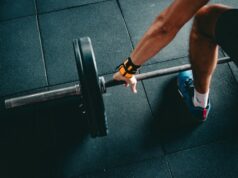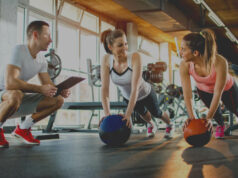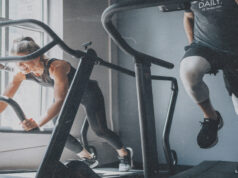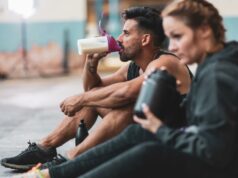Regular exercise routines present a unique challenge for those with recurring back and joint issues. In this article, Toronto certified fitness trainer Gabriel Patterson explains several exercises for people who have back or joint injuries.
Some of these exercises will even help injuries heal faster, and all allow people to exercise without making any issues worse.
Floor Exercises For Core Strength
Core exercises are designed to help the muscles in the abdomen and the back, and exercises that can be done on the floor help avoid unnecessary stress on those muscles and the orthopedic structures of the back.
Strengthening these muscles can promote flexibility and range of motion throughout the entire body.
Some floor exercises include pelvic tilts, bridges, and marches. Pelvic tilts are done on your back with your knees bent and feet flat on the floor, with your arms straight down by your sides.
By tightening your abdominal muscles, your pelvis will tilt, and your lower back will press flat on the floor. Bridges involve the same starting position, and you then move your butt off of the floor while keeping your back straight.
Marches also start from the same position and involve alternating lifting each foot from the floor a few inches and holding the pose for a few seconds.
Exercise Ball Movements
You can find exercise balls as almost any gym or sporting goods store. Exercise balls are excellent for sitting marches and different types of crunches.
The sitting march exercise involves sitting upright on the ball with your feet flat on the floor, lifting each foot a few inches and holding the position for a few seconds. Exercise ball crunches can be done in a variety of positions as well.
The standard half crunch involves reclining on the ball with your hands crossed on your chest and feet flat on the floor and then leaning up as far as is comfortable and holding the crunched position.
Swimming
Swimming can provide an advanced workout while minimizing the stress and impact on the back and core muscles. It is imperative that you understand and only use the form for strokes that will not aggravate back or joint problems.
Back strokes are generally better than front strokes for those with back issues. When needed, devices like noodles or boards are excellent for maintaining proper form and avoiding injury.
Yoga and Pilates Classes
The overall relaxation provided by proper yoga training can greatly assist with relieving back and joint pain. Pilates develops excellent core strength and offers a wide variety of routines for all skill levels.
Both forms of exercise help build endurance and flexibility in structured settings that are focused on avoiding injury and preserving proper form and technique.
About Gabriel Patterson
Gabriel Patterson is a Toronto certified fitness trainer and health coach who advocates a balanced and healthy lifestyle for his clients.
Gabriel’s passion for an active and productive lifestyle has led him to his mission of supporting and educating his clients as they discover new health and fitness routines.
He emphasizes a nutrient-dense diet for his clients as they recover from sports injuries or seek solid fitness foundations. As a lifelong athlete, Gabriel developed a deep interest in physiology and advanced training as a competitive swimmer.
He has taken his experience as a personal trainer into the business world as the founder of Patterson Training.
Gabriel has a strong reputation with his clients due to his positive and supportive attitude and his common sense and transparent approach to coaching and guiding every client as an individual.












